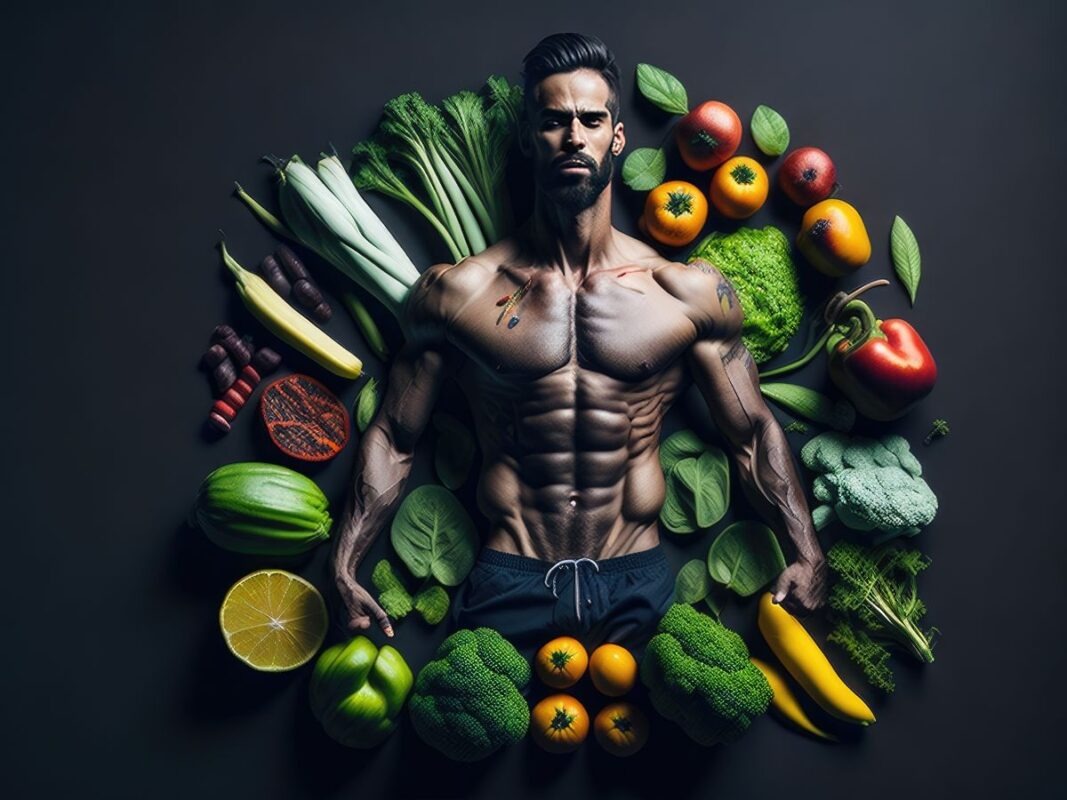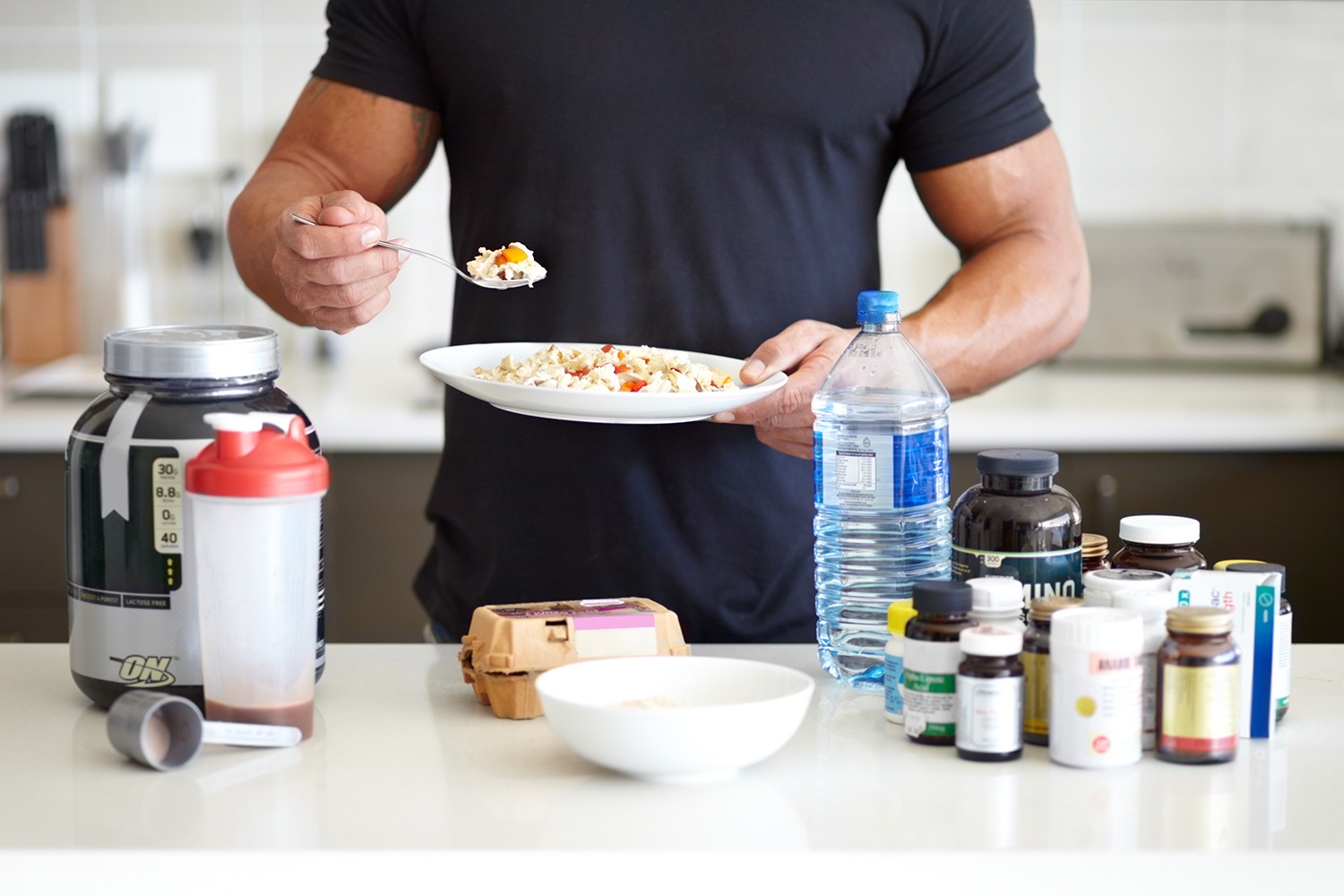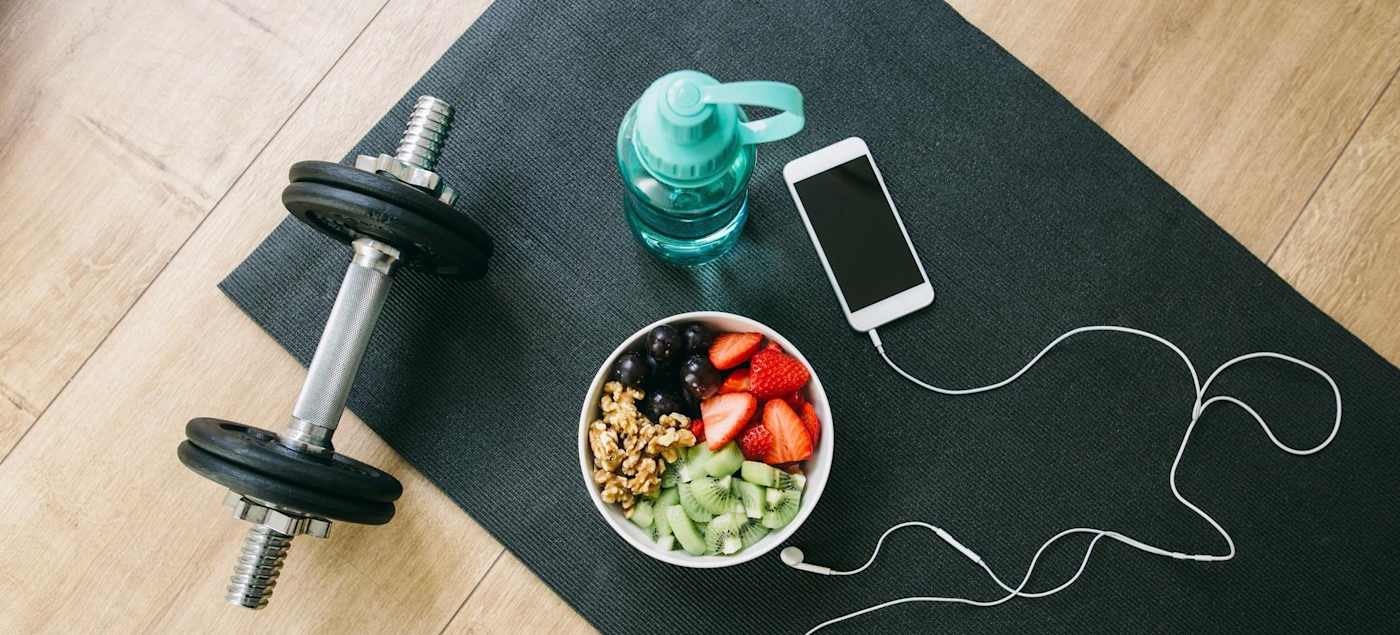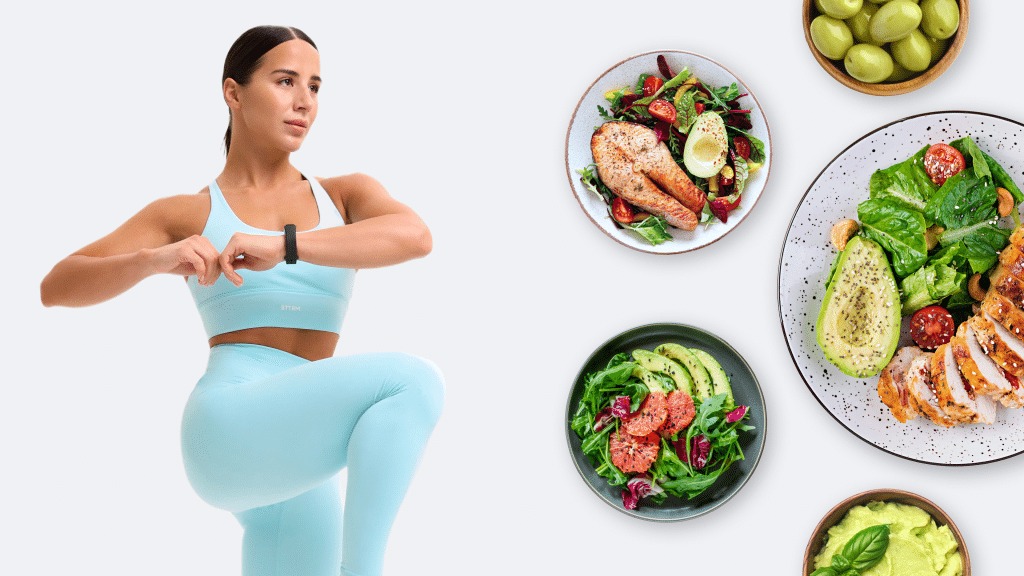Plant-Powered Gains: Your Ultimate Vegetarian Diet Plan for Muscle Growth
If your goal is to build a strong, muscular body, one of the first questions you might have is about protein. For a long time, the common belief was that you could only get enough protein by eating meat. But what if that’s not true? What if you could build a powerful body, build muscle, and get stronger while eating a plant-based diet?
The answer is a resounding yes. A well-planned vegetarian diet is not a barrier to fitness; it’s a secret weapon. A plant-powered diet is full of nutrients, antioxidants, and a lot of protein that can help you to build muscle, recover faster, and feel more energetic. This guide will give you a complete and easy-to-follow plan for a vegetarian diet plan for gym enthusiasts. We will show you exactly what to eat, where to get your protein, and how to fuel your body with the best plant-based foods for maximum gains.
The Truth About Protein: Plants Have It Too
The biggest myth about a vegetarian diet is that you can’t get enough protein. But the truth is, a lot of plants are packed with protein. The idea that a plant-based diet is weak or that it can’t build muscle is a thing of the past. Today, many professional athletes and bodybuilders are on a vegetarian or a vegan diet, and they are stronger and healthier than ever before.
Protein is made of tiny things called amino acids. There are 20 amino acids that your body needs. Nine of these are essential, which means your body can’t make them, and you have to get them from food. The truth is, almost every plant has all nine of these amino acids. The key is to eat a wide variety of plant-based foods to ensure you’re getting all the necessary amino acids throughout the day.
The Benefits of a Vegetarian Diet for Athletes
A vegetarian diet is a powerhouse of nutrition for anyone who wants to get stronger and healthier. Here’s why it is so powerful:
- Faster Recovery: A vegetarian diet is often full of antioxidants and anti-inflammatory foods, which can help to reduce muscle soreness and inflammation after a hard workout. This can lead to a faster recovery and a faster muscle growth.
- A Stronger Heart: A vegetarian diet is often low in saturated fat and cholesterol, which can lead to a lower risk of heart disease. A strong heart is a key to a powerful body.
- A Lot of Energy: A vegetarian diet is full of healthy carbohydrates from sources like fruits, vegetables, and whole grains. These carbohydrates are the main source of energy for your body, and they can help you to feel more energetic and more motivated for your workouts.
- A Healthier Gut: A vegetarian diet is full of fiber from sources like fruits, vegetables, and whole grains. Fiber is crucial for a healthy gut, which can lead to a better digestion and a better overall health.
- It’s Good for the Planet: A vegetarian diet is also a great way to do something good for the planet. A plant-based diet has a much smaller impact on the environment than a meat-based diet.
The Foundation: Before You Start a Vegetarian Diet
Before you even start a vegetarian diet, there are a few important things you need to do to ensure you have a safe and effective plan.
1. Know Your Numbers
The amount of protein you need depends on your weight, your age, and your activity level. A good starting point for most people is to aim for about 0.7-1 gram of protein per pound of your body weight. For example, if you weigh 150 pounds, you should aim for about 105-150 grams of protein per day. You can use an online calculator to get a more accurate number for you.
2. Choose Quality Sources
Not all protein is the same. You should focus on eating a lot of high-quality protein from a variety of plant-based sources. You should eat a lot of legumes, nuts, seeds, and whole grains. This will ensure that you are getting all the amino acids your body needs.
3. Don’t Forget About Iron and B12
A vegetarian diet can be a bit low in iron and vitamin B12. Iron is crucial for your energy, and B12 is crucial for your brain health. You should focus on eating a lot of iron-rich foods like lentils, spinach, and chickpeas. You should also take a vitamin B12 supplement to ensure you’re getting enough.
The Ultimate Vegetarian Diet Plan (A 7-Day Plan)
Here is a simple and easy-to-follow vegetarian diet plan for seven days. This plan is designed to be a guide, and you can change it to fit your tastes and your schedule.
Day 1: Monday
- Breakfast: Oatmeal with a scoop of protein powder, walnuts, and berries.
- Lunch: Lentil soup with a piece of whole-grain bread.
- Dinner: Tofu stir-fry with a lot of vegetables and brown rice.
- Snack: Greek yogurt with a handful of almonds.
Day 2: Tuesday
- Breakfast: Protein shake (plant-based protein powder, almond milk, banana).
- Lunch: A large salad with a lot of mixed greens, chickpeas, and a light dressing.
- Dinner: Black bean burgers on a whole-grain bun with a side of a large salad.
- Snack: An apple with a tablespoon of peanut butter.
Day 3: Wednesday
- Breakfast: Scrambled tofu with a side of spinach and a piece of whole-grain toast.
- Lunch: Leftover black bean burgers.
- Dinner: A large bowl of chili with kidney beans, corn, and a lot of vegetables.
- Snack: A handful of pistachios.
Day 4: Thursday
- Breakfast: Greek yogurt with a scoop of protein powder and a handful of berries.
- Lunch: A large salad with a lot of mixed greens, quinoa, and a light dressing.
- Dinner: Veggie burgers on a whole-grain bun with a side of sweet potato fries.
- Snack: A handful of cashews and a piece of fruit.
Day 5: Friday
- Breakfast: Oatmeal with a scoop of protein powder, almonds, and a sliced banana.
- Lunch: Leftover veggie burgers.
- Dinner: A large bowl of pasta with a lot of vegetables and a tomato sauce.
- Snack: A handful of pumpkin seeds.
Day 6: Saturday
- Breakfast: Scrambled tofu with a side of avocado and a piece of whole-grain toast.
- Lunch: A large salad with a lot of mixed greens, lentils, and a light dressing.
- Dinner: A vegetarian pizza with a lot of vegetables.
- Snack: Greek yogurt with a handful of berries.
Day 7: Sunday
- Breakfast: Protein pancakes with a side of berries and a little maple syrup.
- Lunch: Leftover vegetarian pizza.
- Dinner: A large bowl of curry with a lot of chickpeas, spinach, and brown rice.
- Snack: A handful of sunflower seeds.
A Detailed Guide to Vegetarian Protein Sources
To ensure you are getting the most out of this plan, here is a simple guide to some of the key vegetarian protein sources.
1. Legumes
Lentils, chickpeas, and black beans are a powerhouse of protein and fiber. You can use them in soups, salads, and curries. A cup of cooked lentils has about 18 grams of protein.
2. Tofu and Tempeh
Tofu and tempeh are made from soybeans and are a great source of plant-based protein. Tofu is soft and can be used in stir-fries and scrambles. Tempeh is firmer and can be used in a lot of different dishes. A 3.5-ounce serving of tofu has about 8 grams of protein.
3. Nuts and Seeds
Nuts and seeds like almonds, walnuts, cashews, and pumpkin seeds are a great source of protein and healthy fats. You can use them as a snack or in a salad. A quarter-cup of almonds has about 7 grams of protein.
4. Quinoa
Quinoa is a whole grain that is a great source of protein and fiber. A cup of cooked quinoa has about 8 grams of protein. You can use it as a side dish or in a salad.
5. Greek Yogurt
Greek yogurt is a great source of protein and probiotics. A cup of plain Greek yogurt can have up to 20 grams of protein.
Your Plant-Powered Future
The journey to a stronger, healthier body is a two-part process: hard work in the gym and smart choices in the kitchen. This vegetarian diet plan is your roadmap to success, a detailed guide on how to fuel your body with the right plant-based building blocks. The power of a plant-based diet is not a secret; it’s a fundamental truth of fitness. By making consistent and informed choices about the food you eat, you’re not just following a diet—you’re providing your body with the very tools it needs to transform.



